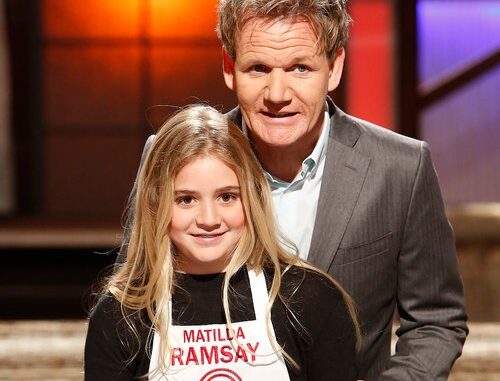
The sleek, professional kitchen in Gordon Ramsay’s London home contains all the elements one might expect from a world-renowned chef—precision German knives arranged with military exactitude, copper pots hanging in gleaming formation, and an impressive professional-grade range that would make restaurant chefs envious. What visitors find surprising, however, is not the equipment but the atmosphere: this kitchen, unlike those featured in his television empire, operates without a single raised voice, flying pan, or colorful expletive.
The Ramsay home kitchen functions as both classroom and social hub, with cooking activities tailored to each child’s age and interest level. The famous chef began incorporating his children into kitchen activities when they were barely tall enough to see over countertops, standing them on sturdy stools and assigning simple tasks that evolved as their skills developed. This approach wasn’t about creating mini-chefs but about fostering confidence, independence, and appreciation for food’s origins and preparation.
This kitchen philosophy extends beyond mere cooking techniques to encompass broader life lessons. When Matilda (Tilly) showed particular interest in culinary pursuits, Gordon didn’t fast-track her through connections or privilege. Instead, he started her at the foundation—teaching proper vegetable washing, knife respect, and cleanup disciplines that professionals master before ever creating signature dishes. This methodical approach reflects the Ramsay parenting philosophy: genuine achievement requires understanding fundamentals and progressing through appropriate stages.
The physical design of the kitchen itself reveals priorities that might surprise Ramsay’s television audience. While undeniably high-end, the space was designed for participation rather than observation. The large center island accommodates multiple workstations, allowing several family members to prepare different components of a meal simultaneously. The sink area features a step built into the cabinetry so younger children can reach the water without assistance. Sharp knives and potentially dangerous equipment are stored in higher cabinets with childproof latches—practical accommodations for a household that treats cooking as family activity rather than solo performance.
Perhaps most telling is how cooking responsibilities are shared rather than dominated by the professional chef in residence. Tana Ramsay, accomplished cook and cookbook author herself, often prepares family meals without her husband’s intervention. The older children regularly cook for themselves and siblings. Even when Gordon is home, he frequently assumes the role of assistant rather than head chef, happily chopping vegetables for Tilly’s experiments or washing dishes after Jack’s attempt at pasta making.
This democratic approach extends to meal planning and food choices. Despite his refined palate and technical expertise, Gordon respects his children’s developing tastes and preferences. Family meals often represent compromise rather than culinary showmanship—sophisticated components alongside simpler preparations, ensuring everyone finds something appealing without creating separate meals for different family members.
The kitchen’s atmosphere shifts subtly as children grow and family dynamics evolve. What began as carefully supervised cooking lessons for young children has evolved into sophisticated culinary discussions with adult offspring who now bring their own ideas and techniques to family gatherings. The arrival of Oscar and Jesse has restarted this cycle, with Gordon once again introducing the simplest kitchen concepts to his youngest sons while engaging with older children at more advanced levels.
Visitors to the Ramsay household consistently report the same observation: the man who built a media empire partially on his volcanic kitchen persona becomes noticeably calmer when cooking in his home environment. His voice softens, his movements become less sharp, his entire demeanor reflects the fundamental difference between professional performance and personal nourishment. In this private domain, cooking transforms from competition to connection—from entertainment to sustenance in the fullest sense of the word.
This kitchen without yelling stands as powerful testament to Gordon Ramsay’s most important and least publicized talent—his ability to compartmentalize the demands of building a global brand from the more meaningful work of building a family. While millions know the chef who demands perfection under pressure, only his immediate family experiences this other Gordon—the patient teacher, the enthusiastic collaborator, and the father who understands that the most important meals are measured not by technical execution but by the conversations, laughter, and connections they foster around the family table.
![Hell's Kitchen' customer records Gordon Ramsay screaming over Magali's burned fish: 'He's getting pissed!' [Exclusive Clip]](https://s.yimg.com/ny/api/res/1.2/4uEx_BXXV5AwPBHrLLt60w--/YXBwaWQ9aGlnaGxhbmRlcjt3PTk2MDtoPTU1Nw--/https://media.zenfs.com/en/gold_derby_993/a467e42921273adacec185aed7d88a03)
